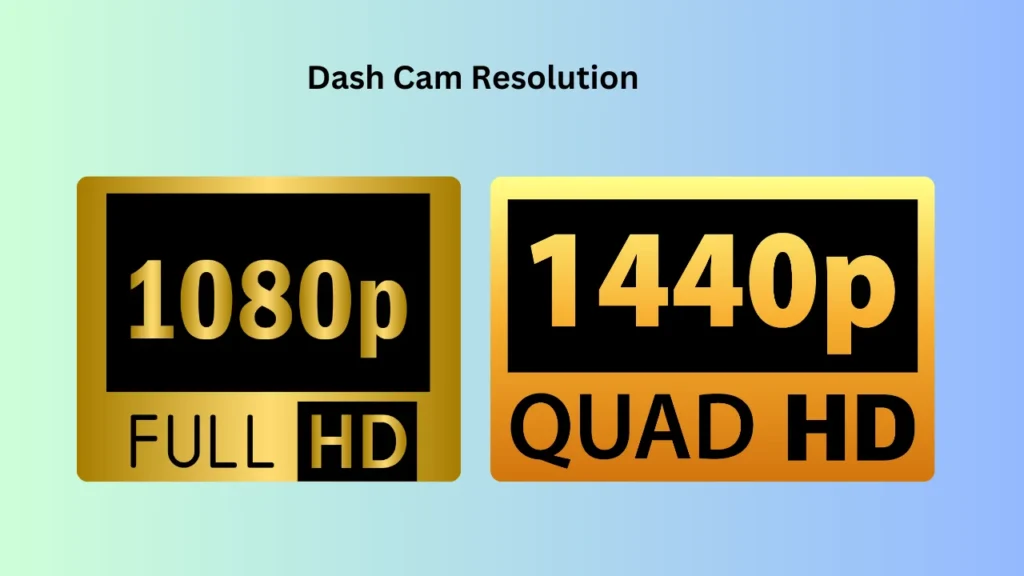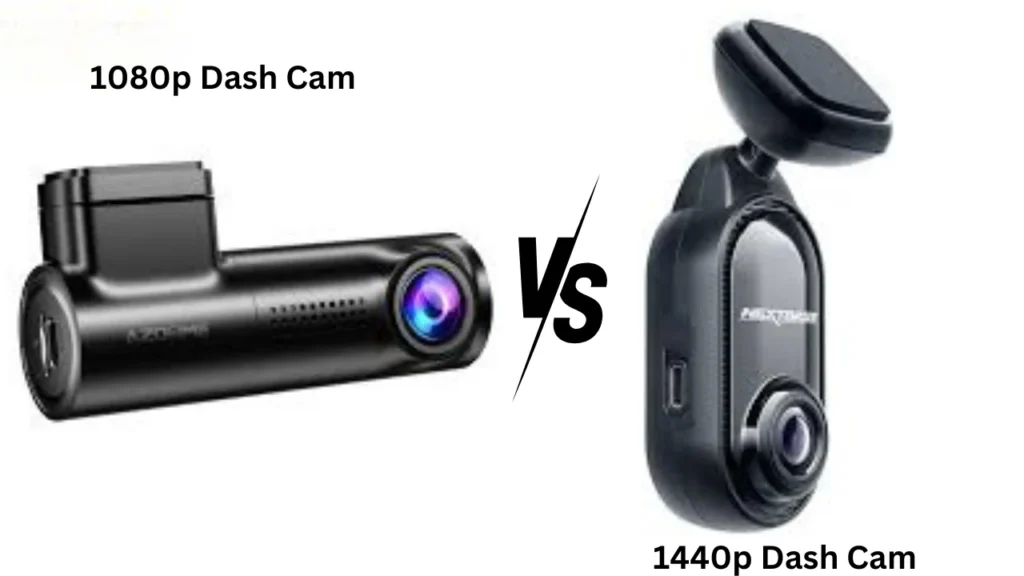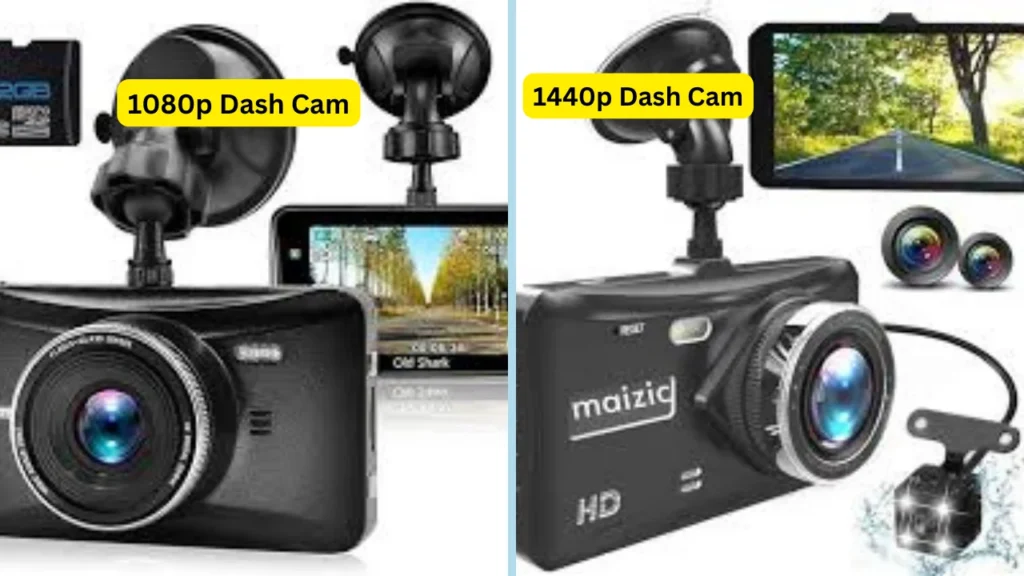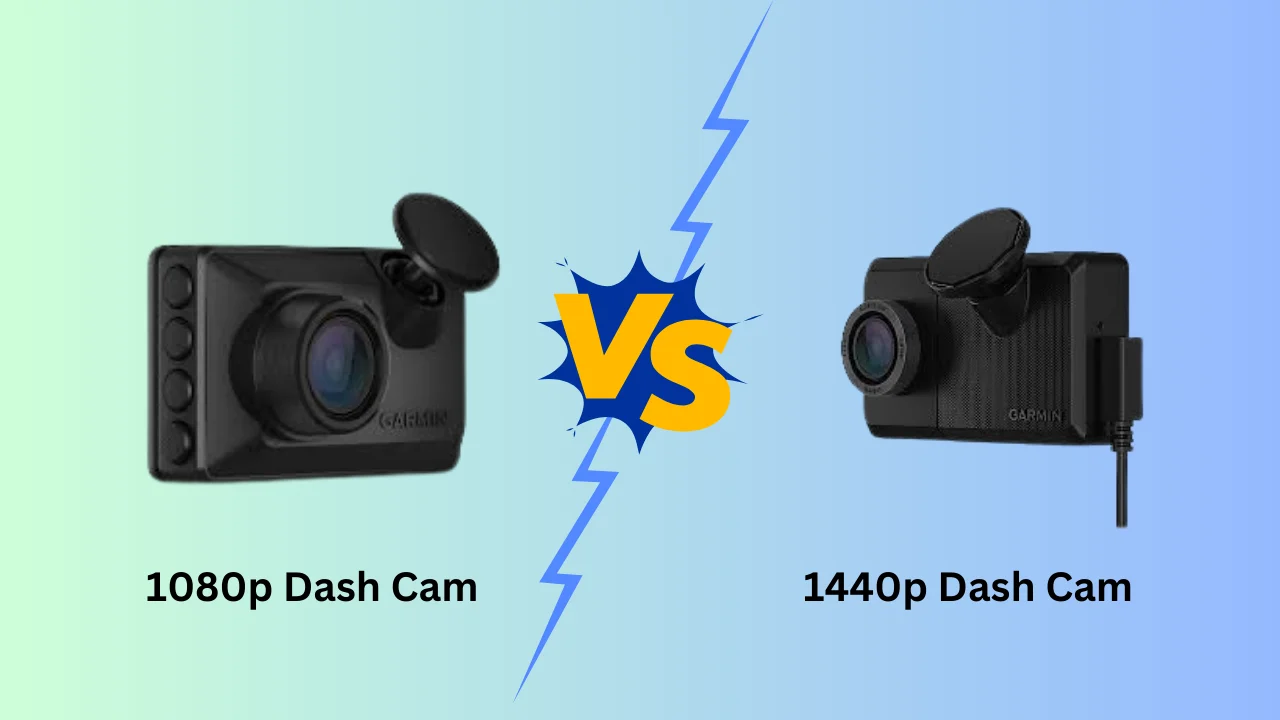When choosing a dash cam, one of the first decisions you’ll face is the 1080p vs 1440p dash cam debate. With 1080p offering 1920 x 1080 pixels and 1440p delivering 2560 x 1440 pixels, the difference is clear. This increase in resolution means more detail, but is it always necessary? For a comparison between the two dash cams, visit Redtiger vs Rove Dash Cam.
In this article, I’ll dive into the pros and cons of each resolution. Whether you’re after clearer footage for identifying license plates or simply want a reliable camera for daily driving, understanding these two options will help you decide which is the best fit for you.
Do 1440p dash cams perform better in low-light conditions compared to 1080p models?
1440p dash cams may offer better performance in low-light conditions compared to 1080p models, but it largely depends on the sensor and lens quality rather than just the resolution.
While higher resolution like 1440p provides more detail in well-lit scenarios, low-light performance is influenced by factors such as aperture size, sensor sensitivity, and the type of night vision technology used.
Some 1080p dash cams have advanced sensors that perform exceptionally well in low light, so resolution alone isn’t always the deciding factor. Always check for features like HDR or WDR for improved night-time video clarity. Get the full breakdown in Garmin Dash Cam Mini 3 vs Mini 2.
Dash Cam Resolutions

When it comes to dash cams, resolution plays a big role in how well you can capture details while driving. In this section, we’ll dive into the two most common resolutions you’ll find: 1080p and 1440p.
1080p (Full HD) Dash Cams
So, what exactly is 1080p? It stands for “Full HD” and has a resolution of 1920×1080 pixels. It’s the most common option for dash cams, offering a solid balance between price and performance. The affordability of 1080p models makes them a popular choice for drivers who don’t need ultra-high-resolution footage.
1440p (2K) Dash Cams
Now, let’s talk about 1440p. Also known as 2K, it offers a resolution of 2560×1440 pixels. With 33% more pixels than 1080p, 1440p dash cams capture more detail, especially when you’re trying to zoom in on things like license plates or road signs. For those looking for more clarity in their recordings, 1440p is the way to go.
Comparison Table
1080p vs 1440p Dash Cam Differences

Video Quality Comparison
When it comes to dash cams, video quality is probably the most important factor to consider. After all, the main purpose of a dash cam is to capture clear footage of any incidents on the road, right?
Detail Clarity
When comparing 1080p to 1440p, one of the biggest differences lies in the level of detail captured. A 1080p camera gives you a clear image, but 1440p really ups the ante, offering around 2.5 times the pixel count. This means that 1440p dash cams are better at capturing fine details like license plates from a distance or road signs that might be critical in an accident.
For example, with 1080p, you might be able to make out a license plate from a car about 20-25 feet away, but with 1440p, you’ll likely have clarity at distances of up to 30 feet or more. That extra sharpness could make a world of difference if you’re trying to identify a vehicle involved in an incident.
Low-Light Performance
When driving at night, video clarity can become a major challenge. Lower-resolution cameras may struggle to capture enough detail in low-light conditions. 1080p dash cams tend to have more noise and blurry footage when light is scarce. In contrast, 1440p cameras generally handle low-light situations better, thanks to their higher resolution and often better sensors.
A 1440p camera typically does a better job of reducing noise in dark environments. This means when you’re driving through dimly lit streets or at night, the footage will still be clear enough to identify important details. In my experience, this is especially valuable for nighttime road accidents, as it ensures you won’t miss critical visual evidence due to poor image quality. Find out how the models differ in our article on Garmin Dash Cam 57 vs Mini 2.
Storage and File Management
Managing storage and file sizes is crucial when choosing a dash cam. Both 1080p and 1440p come with different storage needs, so let’s explore how each one impacts your storage capacity.
File Size and Storage Requirements
A 1080p dash cam typically needs around 60-80MB per minute of footage. In contrast, a 1440p dash cam requires 100-130MB per minute. This difference can lead to quicker storage consumption on longer drives.
Storage Capacity for Extended Recording
With a 64GB microSD card, a 1080p camera can record for about 10 hours. A 1440p camera, however, only gives you about 7 hours of footage. To avoid overwriting too soon, upgrading to a larger capacity card is recommended.
Data Management and Transfers
The larger file sizes of 1440p recordings mean more frequent data transfers. With a 1080p dash cam, transferring files is quicker and easier. However, transferring 1440p footage will take longer, so make sure you have enough time and storage space for backups.
Performance and Frame Rates

When choosing a dash cam, understanding the performance and frame rate is crucial for getting smooth, detailed footage. Let’s dive into how 1080p and 1440p differ in terms of video performance.
Frame Rates at Different Resolutions
At 1080p, you can expect to shoot video at 60 frames per second (fps), offering incredibly smooth playback. This is ideal for capturing fast-moving objects, like other cars on the road. However, 1440p typically operates at 30fps to maintain quality and reduce file size, which means a slight tradeoff in motion fluidity.
Smoothness of Video Playback
For me, the difference in playback smoothness is noticeable. At 1080p with 60fps, you get much sharper, more fluid footage, even during high-speed scenarios. On the other hand, 1440p’s 30fps might introduce a bit of choppiness, particularly if you’re driving fast or need to identify fast-moving objects like license plates.
Processor and Hardware Demands
With 1440p, your dash cam needs more power to handle those extra pixels, which means it requires a stronger processor. Based on tests, dash cams running at 1440p tend to generate more heat, sometimes leading to performance throttling. I’ve noticed that some 1440p cams overheat after a few hours of recording, while 1080p models usually stay cooler and last longer. If you’re deciding between the two models, read our comparison in Garmin Dash Cam 47 vs 57.
Practical Considerations
When you’re deciding between a 1080p and 1440p dash cam, it’s essential to think about your specific needs. Some situations might make one resolution a better fit than the other, depending on factors like driving conditions and budget.
Use Cases – When to Choose 1080p vs. 1440p
For everyday driving in urban areas, a 1080p dash cam might be just what you need. Most of us only need to capture clear footage of other vehicles or the occasional incident, and 1080p does that perfectly well at a reasonable price. It’s sufficient for most users, especially if you’re just looking to have a bit of extra protection on the road.
However, if you often drive in rural areas or at night, a 1440p dash cam might be more beneficial. With its higher resolution, you can capture finer details like license plates or road signs more clearly, especially when the lighting is poor. In fact, 1440p dash cams capture four times as many pixels as 1080p, giving you that added clarity in tricky situations.
Cost Analysis – 1080p vs 1440p dash cam
Now, let’s talk about cost. A 1080p dash cam typically ranges from $50 to $150, making it a solid choice for budget-conscious buyers. It offers good performance without breaking the bank, and for many, that’s all they need. A decent 1080p dash cam can record high-quality footage for a fraction of the price of a 1440p model.
On the other hand, 1440p dash cams can cost anywhere from $150 to $300. While that’s a bit of a jump, you’re paying for sharper images, better low-light performance, and more storage space for high-resolution videos. It’s a worthy investment if you want the highest-quality footage, especially for security or insurance purposes. For a detailed comparison, check out our article on Escort Dash Cam M1 vs M2.
Wrap Up
After diving into the 1080p vs 1440p dash cam debate, it’s clear that both options have their merits. Personally, I find 1080p to be ideal for most users, as it provides solid clarity without sacrificing storage.
However, if you’re looking for more detailed footage, especially at night, 1440p is a great choice. For those willing to invest a bit more, 1440p offers a noticeable difference, with around 30% better image quality. Ultimately, it comes down to your specific needs!




